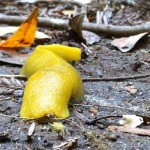I wrote my first profile as an undergraduate, of an eminent economics professor at UC Berkeley’s Haas School of Business. I thought it was pretty good. It even earned an honorable mention in a school-wide writing competition.

Image credit: http://lubinarts.blogspot.com/2009_10_01_archive.html
Then a real profile of the same person was published in Forbes, and I said to myself: “Wow. That’s a profile.” It made my first-time effort look like a kindergartener’s rendering of a house–flat and wobbly, with a few stick figure characters here and there. The trouble was, I really couldn’t put my finger on why the real deal was so much better than mine. This quarter at UC Santa Cruz, with thoughtful guidance from lecturer Janet Hopson, I’m starting to understand.
A good profile is about more than just a person’s character and life story. There are a number of key elements we’ve identified so far in class, and I think there will be more to come.
1. Action. A good profile shows the subject in action–doing something. Maybe they’re in the field hiking through muck up to their thighs, or gesticulating wildly to illustrate a point to a room full of people. Or maybe they’re just crossing the street, as in our reading “Cooking for Eggheads” by Patricia Gadsby:
…This–pronounced “tiss”–looks dapper in a black suit and one of the impeccable white collarless shirts that have become his trademark. A full day lies ahead in his lab, he says, but first we must shop. He bounds to his feet, ditches his jacket, and descends to the stifling street below, proceeds down a cobbled alley, crosses the boulevard Saint-Michel, rounds a corner, and dives into the local supermarche.
2. A physical description. Gadsby combines this with the action at first pass, and later describes Dr This’s stature in comparison to his associate, giving us a nice visual contrast.
3. Vivid language. Like any good writing, a profile needs clear descriptions that grab the reader and haul him or her into the scene with the characters. I can see myself racing down the stairs to keep up with This as he bounds and dives through the city.
4. Background and future. It’s crucial to give the reader context. Where did the profile subject come from, and where is he going? If you can get him to describe in his own words how his past experience has made him what he is today, so much the better. And where is he going, what’s he planning to do next? This can make for a natural ending.
5. Other points of view. Readers want to know what the people close to the main subject think of him. How do they see him personally, and what have his professional contributions as a scientist meant to his field?
6. Science. Since we’re profiling scientists, explanation and illustration of research findings will pepper the profile. Of course, they should be interesting and intelligible to our proverbial science-interested high school student. Imagery, analogy, quotes, all the usual devises are fair game.
7. Focus. There’s no need (and no space) to go into a full biographical recounting of the subject’s life. A narrower scope is critical to holding the reader’s interest. Maybe focus on the time you spent with the source, drawing in relevant past events.
I know there are many more things to keep in mind while writing a profile. These are the ones I have internalized as of now. It’s a tall order, no doubt, but it feels good having some concrete understanding of exactly why my first piece fell short of a real writer’s craft.







Comments are closed.